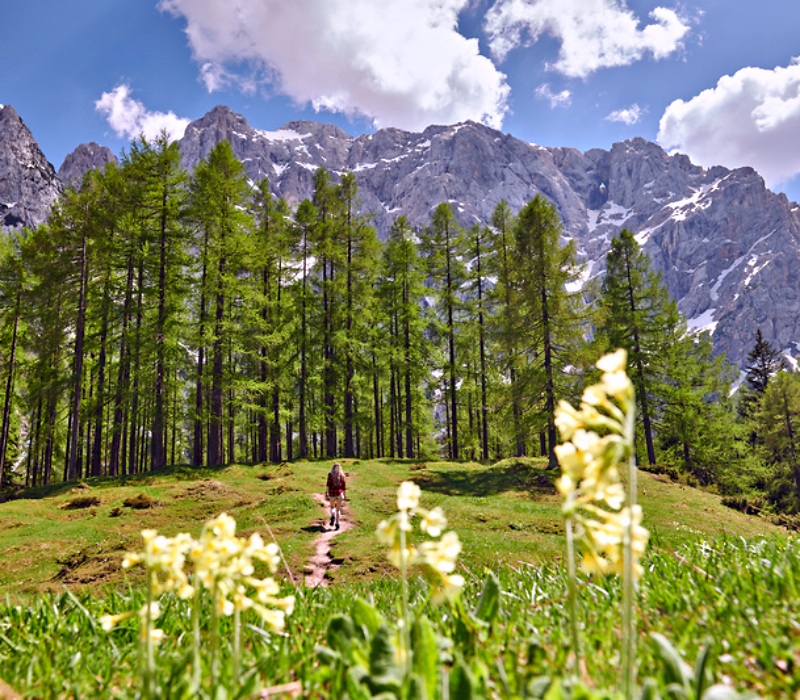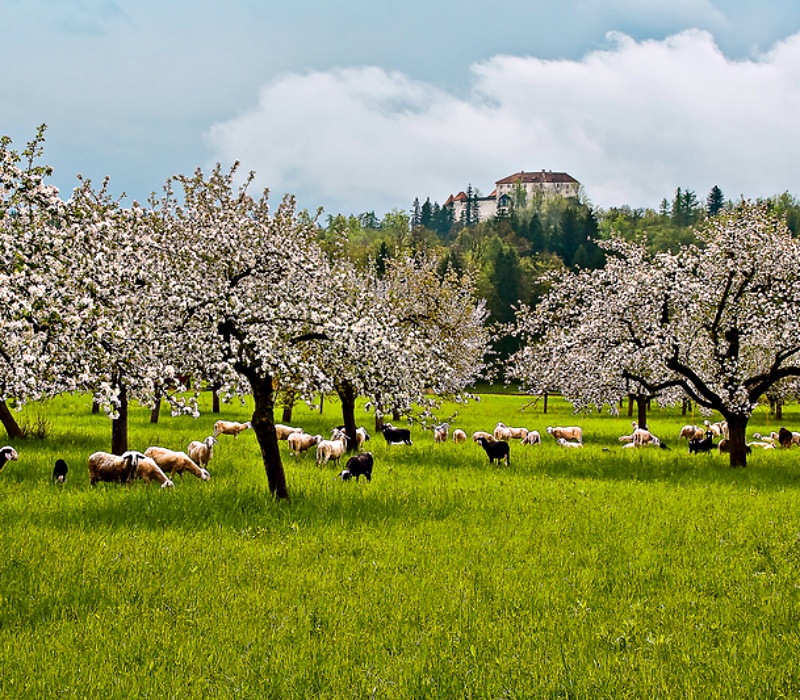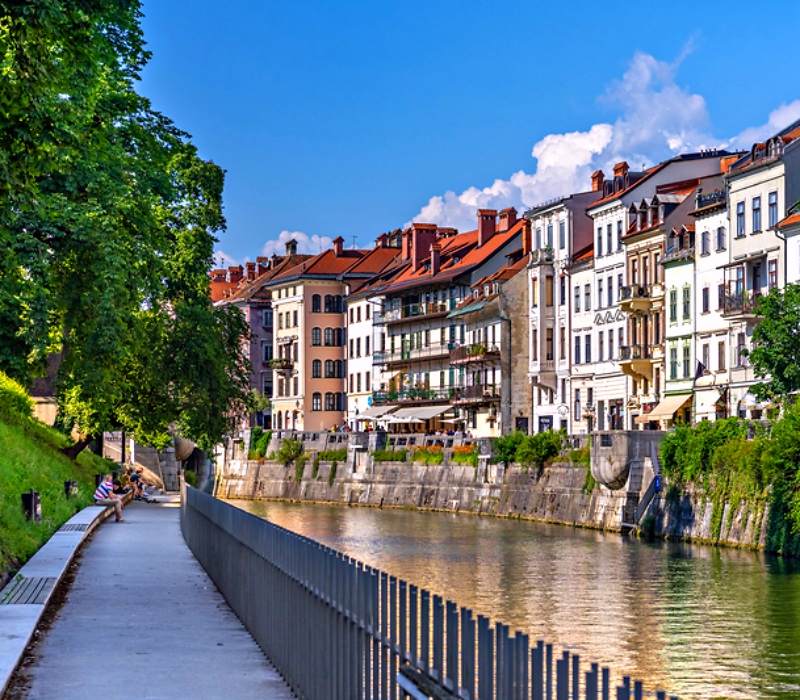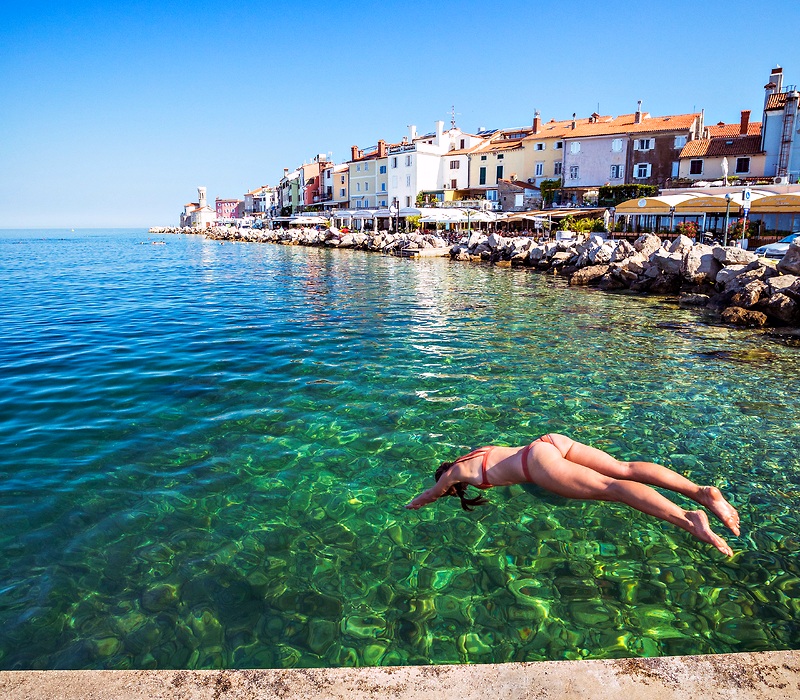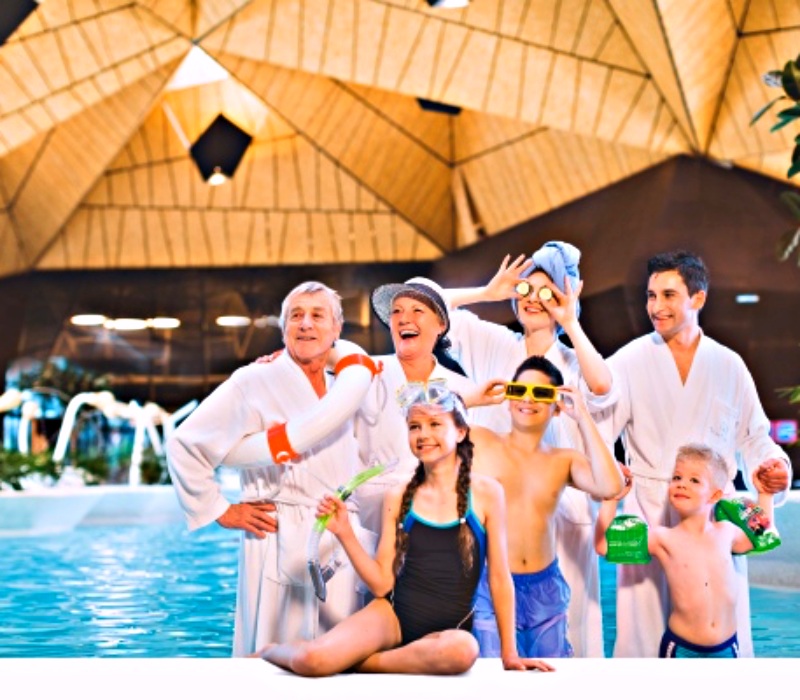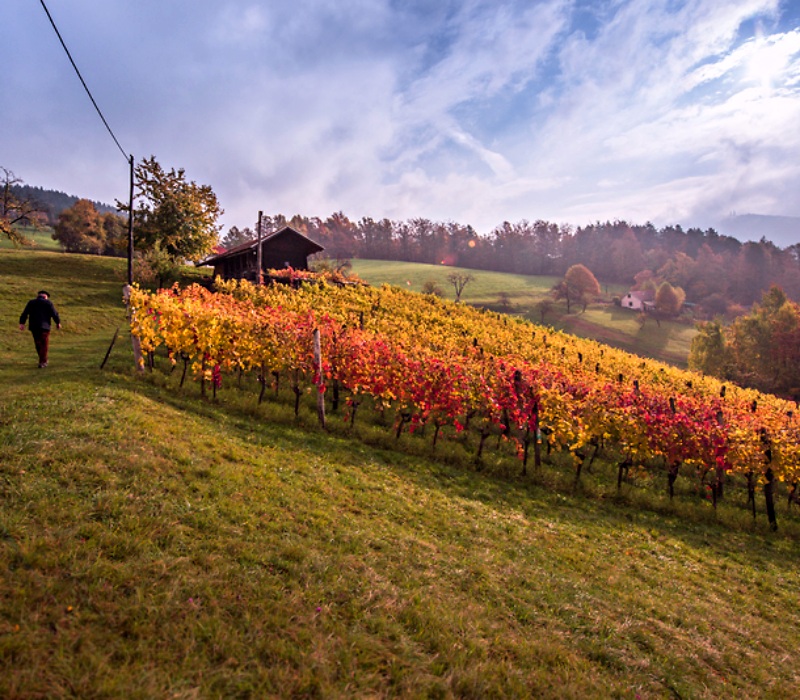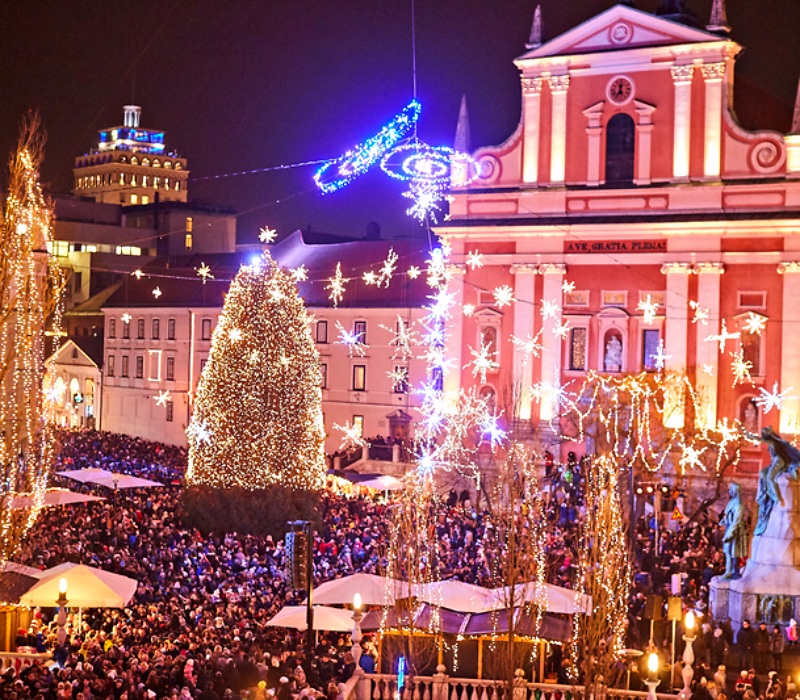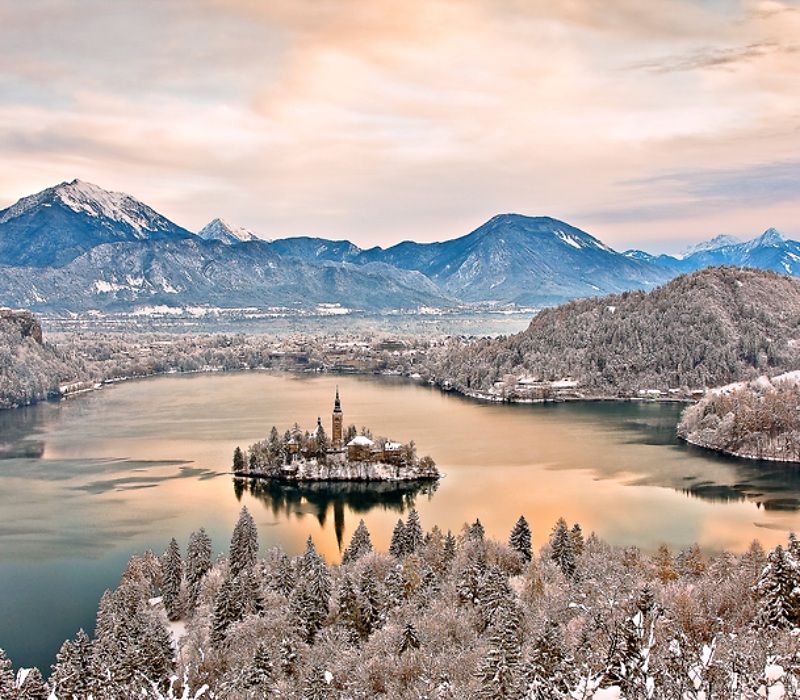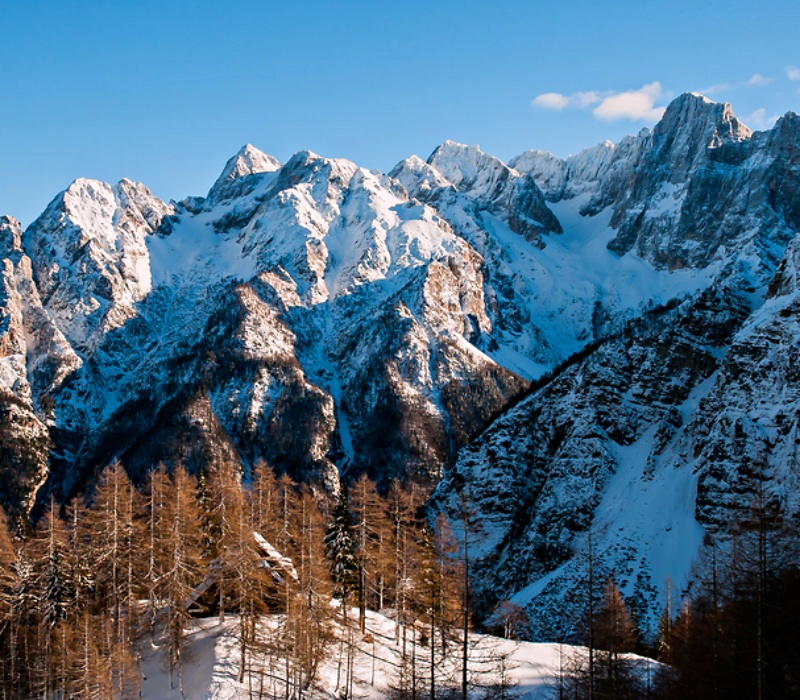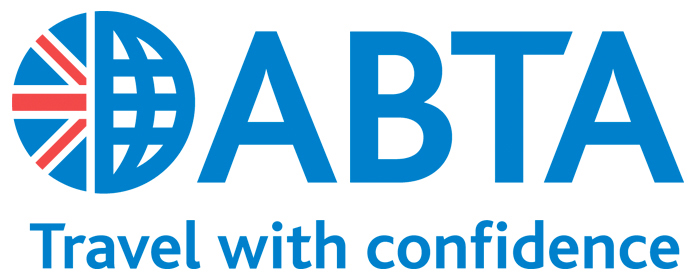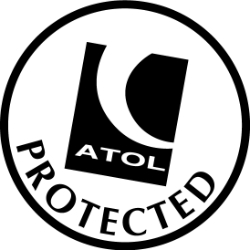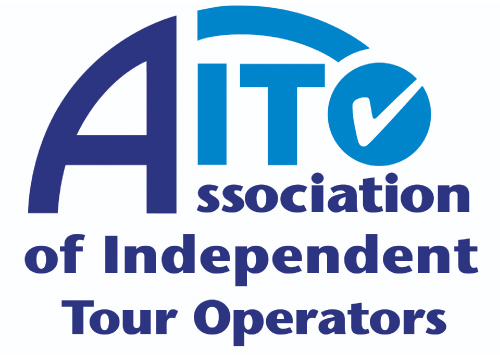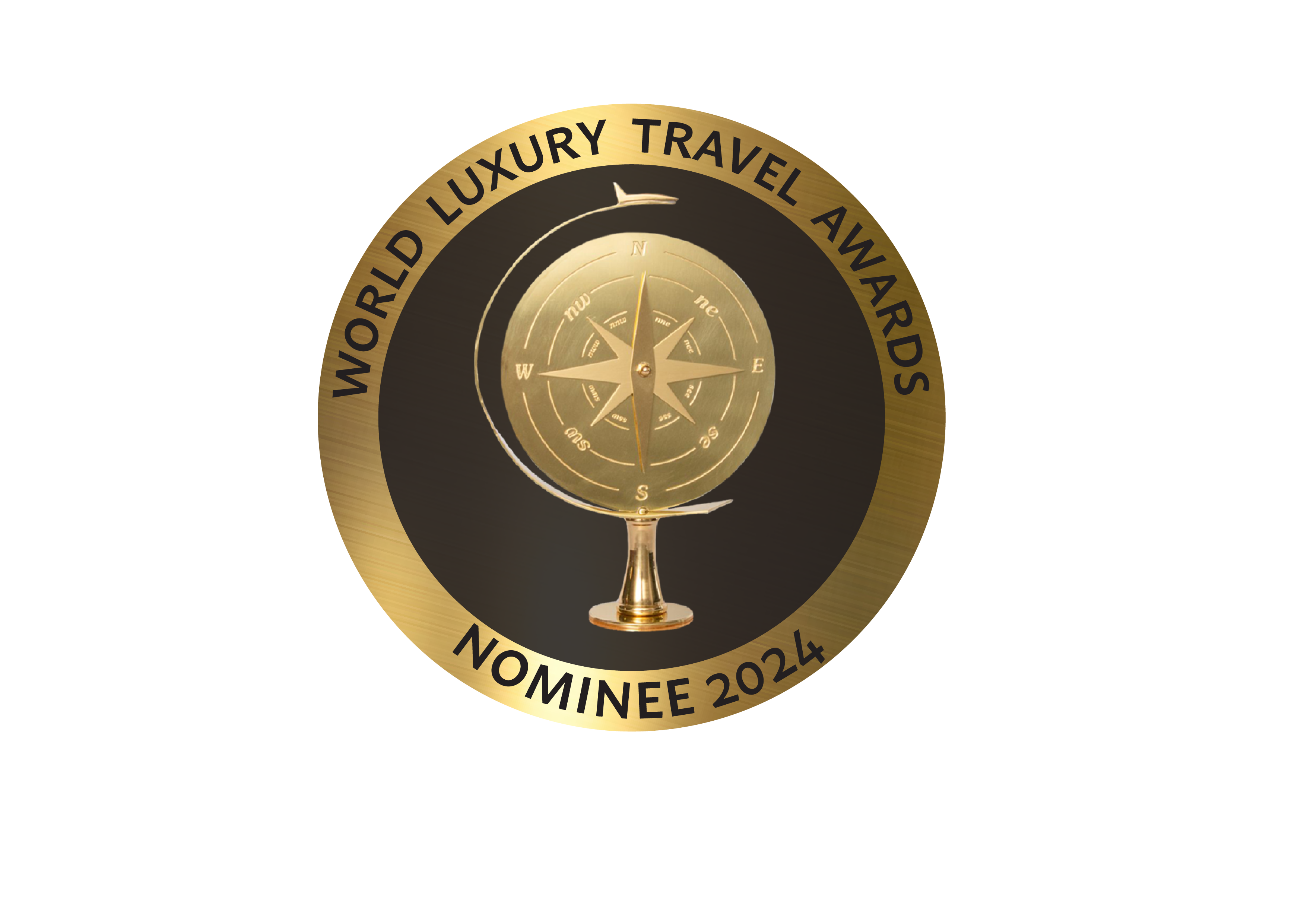Lake Bled
Lake Bled is one of the most visited attractions in Slovenia. The beautiful views of the lake and the small island it surrounds brings thousands of visitors every year. The best way to reach the island is taking a pletna, a traditional gondola in the Bled area. Once on the island, visitors must walk up ninety-nine steps to reach the island’s church. It is considered good luck to ring the church’s bell when visiting the island.
Ljubljana
Slovenia's capital city is as romantic and charming as they come—and clean, having been named the “Green Capital of Europe 2016” by the European Commission. Stroll through the pedestrian-only Old Town, sip coffee by the leafy banks of the Ljubljanica River, or take in the baroque architecture and hilltop sixteenth-century Ljubljana Castle.
Maribor
Slovenia's second-largest city is provincial and charming, with a medieval Old Town, pedestrian-only central streets, and a skyline defined by orange roofs and rolling hills. The town is also the site of a glorious landmark: "the oldest vine in the world." Stara Trta (literally "Old Vine") is more than 400 years old, and is a symbol of the rich wine culture in Maribor.
Piran
Situated on a picturesque peninsula on the Adriatic coastline, Piran is one of Slovenia's most beautiful cities. Its pedestrian-only Old Town is reminiscent of Venice in miniature, with Gothic architecture, alfresco wine bars, narrow alleyways, and glowing sunsets.
Lipica Stud Farm
Lipica Stud Farm has been breeding Lipizzaner horses since the sixteenth century. Once used by royals for their private stables, the farm is now open to visitors and allows them to admire this beautiful breed of horse. When visiting the Lipica Stud Farm, guests can stroll through the barns and join one of the farm’s guided tours. Three times a week the Classical Riding School performs, and guests can see the Lipizzaner horses in action.
Triglav National Park
The Triglav National Park, named after the country’s tallest mountain, is the only National Park in Slovenia. With beautiful views of the mountains, hills, lakes, rivers, and pastures, this park is a nature lover’s paradise. Aside from hiking, Triglav National Park offers great activities such as kayaking, rafting, skydiving, and parasailing.
Ljubljana Airport
Slovenia main airport, Jože Pučnik Airport, is located just outside its capital city and is well served by international airlines.
More
Trieste Airport
A small regional airport, Trieste in Italy is located about an hour away from Slovenia’s seaside resort town of Portoroz. Ryanair flies to and from Trieste multiple times a week from Stansted Airport.
More
Sečovlje Salina Nature Park
The Salt pans in the Sečovlje Salina Nature Park are one of the few places in the world where sea salt is still produced by using a centuries-old method. When walking on the park trails, visitors can observe salt being harvested manually by local workers.
Planica Nordic Centre,
Planica is home to the biggest ski jumping hill in the world. For over twenty years it has hosted one of the most important ski jumping competitions in the world. In 2015 Planica received a much-needed update, and the new Planica Nordic Center was built. Aside from the ski jumps the center also features an athletics stadium, a zipline, a wind tunnel, cycling and walking paths, and a visitor’s center. Planica zipline has the steepest descent in the world, which creates the sensations that ski jumping champions feel when flying through the air.
